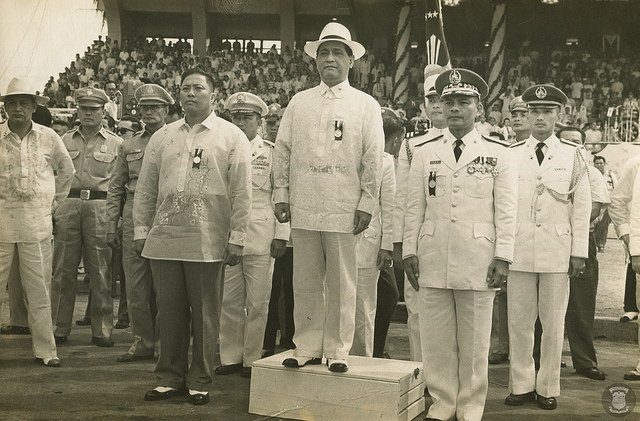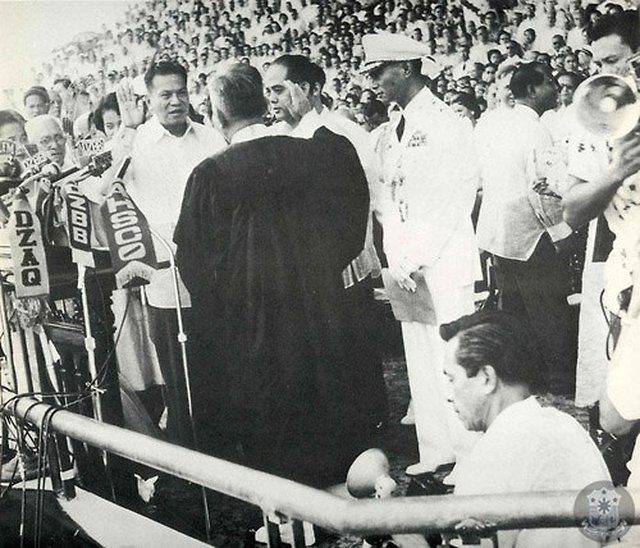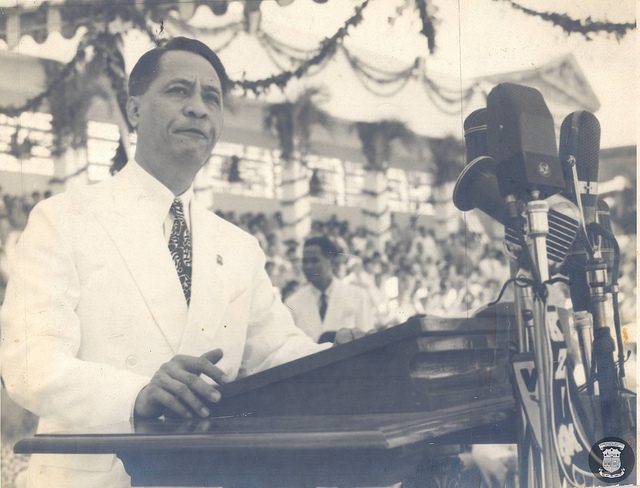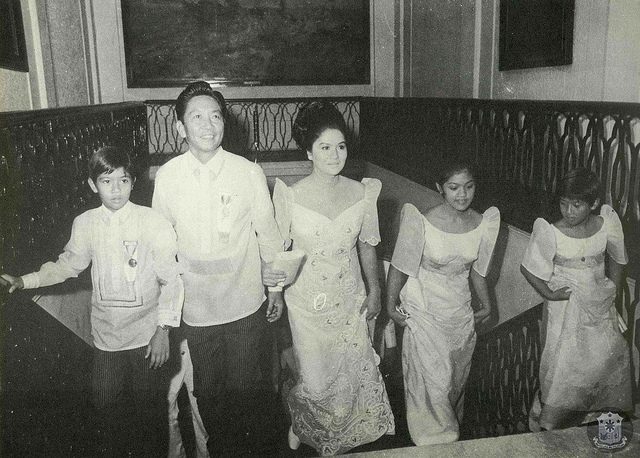SUMMARY
This is AI generated summarization, which may have errors. For context, always refer to the full article.

MANILA, Philippines – Simple with the least cost. This was the direct order President-elect Rodrigo Duterte gave for his inaugural ceremony on Thursday, June 30.
With preparations almost finalized, this meant rejecting the usual inauguration venue, changing the day’s menu, and even limiting the use of cars to foreign dignitaries only.
Given his request for a humble celebration of his assumption into office, Duterte will be breaking a long line of tradition his predecessors had adhered to.
Inauguration venue
The Quirino Grandstand has seen the most number of presidential inaugurations. Formerly called the Independence Grandstand, the venue takes its name from late president Elpidio Quirino, the second to take his oath of office there. Former president Manuel Roxas started this tradition when he retook his oath in July 4, 1946 as part of the Independence Day celebration. Seven presidents followed in his footsteps.
Emilio Aguinaldo’s official inauguration was held in Barasoain Church in Malolos, Bulacan, where Joseph Estrada was also sworn into office in 1998.
In the American and Japanese colonial periods, some presidents took their oaths in the then-Legislative Building in Manila. The building now houses the National Art Gallery of the National Museum.
Special circumstances caused other presidents to deviate from the traditional route. Manuel L. Quezon and Sergio Osmeña are the only two presidents who were inaugurated abroad, specifically in Washington, DC when the Philippines was transitioning to an independent rule from the Americans.
Corazon Aquino had her inauguration at Club Filipino, Greenhills in San Juan at the height of the people power revolution against Ferdinand Marcos. Former president Gloria Arroyo’s first inauguration was at the EDSA Shrine, Quezon City, after Estrada was forced out of office in 2001.
Duterte will be taking his oath in Rizal Hall, Malacañang. He chose the venue to avoid the inevitable traffic that an inaugural ceremony at the Quirino Grandstand would surely cause. With this choice, his visitors will be limited to only 627.
Salubong
The transfer of power is symbolically demonstrated with the meet-up of the incumbent president and the president-elect. Roxas started this tradition as well, when he fetched Osmeña from Malacañang Palace. The incumbent president lets his successor sign the Palace guestbook as the last guest. He also gets to keep the guestbook.
In 1946, Roxas and Osmeña descended the Grand Staircase of Malacañang together to signal the end of Osmeña’s term as president. Both then headed to Roxas’ inauguration, where they were greeted by a 21 gun salute, assisted by the honor guard presenting arms, 4 ruffles or drum rolls and flourishes, or trumpet blasts. The playing of the National Anthem followed.
The Armed Forces of the Philippines will have a final salute with their chief executive, who in turn bids farewell to the major service commanders.
During former president Ramon Magsaysay’s inauguration in 1953, Quirino immediately left the venue to represent the closing of his term and the beginning of a new one. This tradition still holds today. By the time the elected president takes his oath, the old one must already be in his residence and return to being an ordinary citizen.
The incoming president is supposed to ascend the Grand Staircase later in the day, this time as the president of the republic. In Duterte’s case, he will climb up the stairs upon Aquino’s departure and before he is sworn into office, since the inauguration will be held inside Malacañang.

Oath-taking
The president of the republic is supposed to take his oath at noon of June 30. The vice president is sworn into office a few minutes before the president, since protocol dictates that no one should follow the president. This also ensures the availability of a constitutionally authorized successor even before the presidential seat is officially filled.
- The oath
Article 7, Section 5 of the Philippine Constitution dictates the words that would swear the president into office:
I do solemnly swear [or affirm] that I will faithfully and conscientiously fulfill my duties as President [or Vice President or Acting President] of the Philippines, preserve and defend its Constitution, execute its laws, do justice to every man, and consecrate myself to the service of the Nation. So help me God.
The last sentence may be omitted in cases when the president is a non-believer. The president may also choose to use the Filipino version of this oath, as was the case with Laurel, Marcos, Ramos, Estrada, and Benigno Aquino III. Aguinaldo was the only president to use Spanish in his oath.
- The use of the Bible
Up until Quirino’s inauguration, presidents refrained from swearing on the Bible to preserve the separation of Church and State. Magsaysay broke this tradition, and used two Bibles, one each from his mother and father’s side, when he took his oath. Succeeding presidents followed suit. In 2010, Aquino used the same bible that his mother used when she took her oath in 1986.
For Duterte’s oath-taking, his daughter Veronica, whom they endearingly call “Kitty” will hold the Bible as her father recites the president’s pledge.
- Who administers the oath
While the Constitution does not specify that the Chief Justice should administer the presidential oath, it has been a custom in the Philippines. The Aquino mother and son pair are, so far, the only two presidents who took their oath under associate justices. Duterte will be the third, since he plans to take his oath under former classmate and Associate Justice Bienvenido Reyes.
- After the oath
Just as a 21-gun salute heralded the arrival of the incumbent president and president-elect at the start of the ceremonies, another 21-gun salute will commence immediately after the oath, along with 4 ruffles and flourishes. The presidential anthem entitled Mabuhay is played, a tradition that dates back to Quezon’s inauguration.

Inaugural address
The newly sworn-in president will then give his inaugural address. Here he is given the chance to present his vision for the country during his term, as well as to encourage the people to work hand in hand in ensuring progress in the years to come.
Thus far, Roxas holds the record for the longest inaugural speech, consisting of 4,385 words. Aquino’s inaugural speech in 2010 lasted for around 22 minutes, which consisted of 2,049 words.
As answer to Aquino’s address in 2010, the public rose to recite Panata sa Pagbabago, a pledge that each citizen will help government in effecting change. This was the first time for the public to also pledge their allegiance during the inaugural ceremonies.
First walk up the Grand Staircase as president
After the address, the AFP and the Philippine National Police will salute the president, as recognition of their new commander-in-chief.
Upon his arrival in Malacañang, the president will walk up the Grand Staircase for the first time as the country’s chief executive. Quezon was the first president to practice this tradition, inspired by the story of how Jose Rizal’s mother climbed the stairs on bended knees to pray for her son’s life.

The Vin d’honneur and the Rigodon de Honor
Local guests and foreign dignitaries are then treated to a simple reception after the ceremony. The Vin d’honneur, where visitors are treated to wine, as well as the Rigodon de Honor, a dance performed during the inaugural ball, were both conducted until Marcos’ inauguration in 1981. The Palace chose to do away with the grand celebrations and opted for simpler ones after Marcos’ rule.
Duterte’s administration will take the simplicity of the celebrations a notch higher, as he has promised that only maruya and durian candy would be served during his inauguration. Later additions were made by caterer Via Mare – monggo soup, smoked fish with alugbati, pandesal with kesong puti and Vigan longganisa, lumpia ubod, durian tartlet, and fried saba. Instead of wine, guests will be treated to buko juice and pine-mango cooler. – Rappler.com
Source: Gov.ph
Arra Francia is a Rappler intern.
Add a comment
How does this make you feel?
There are no comments yet. Add your comment to start the conversation.